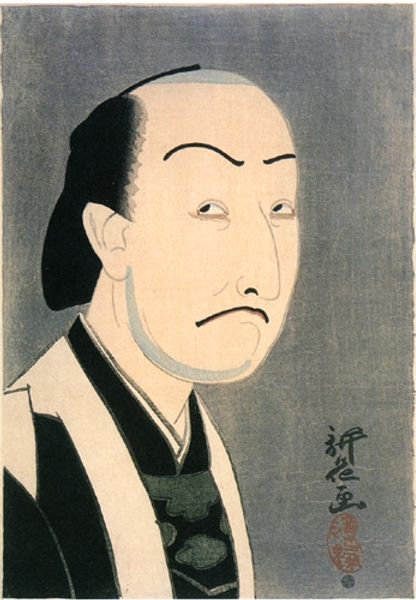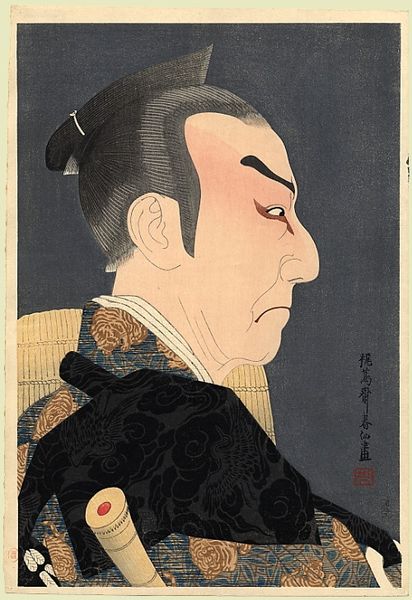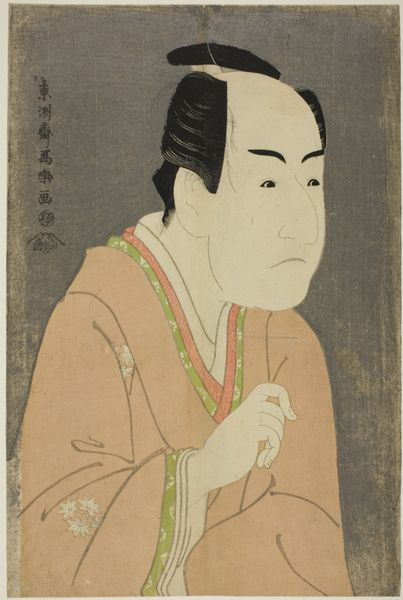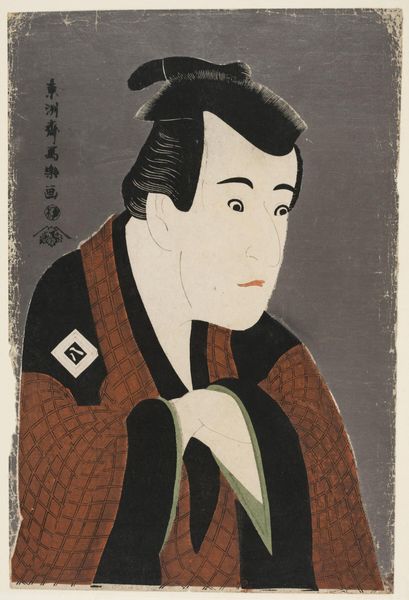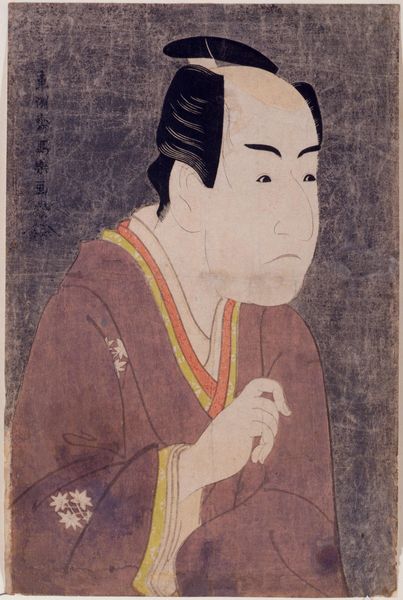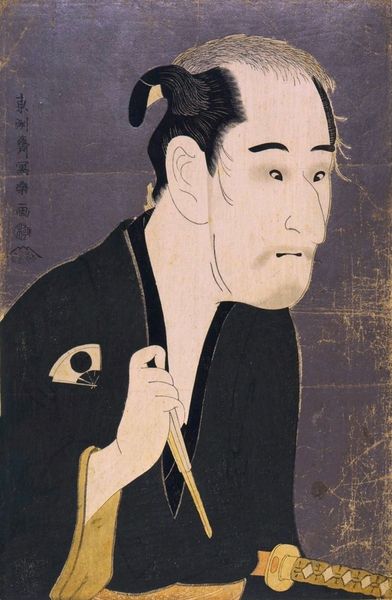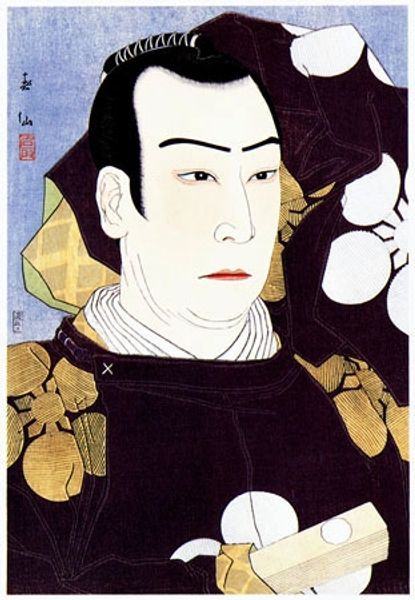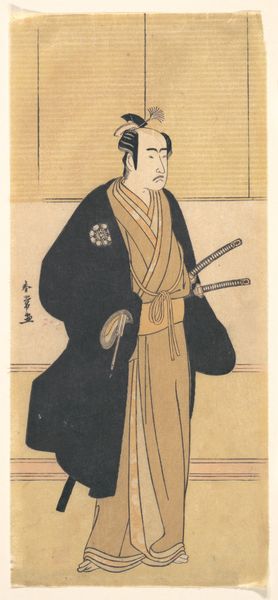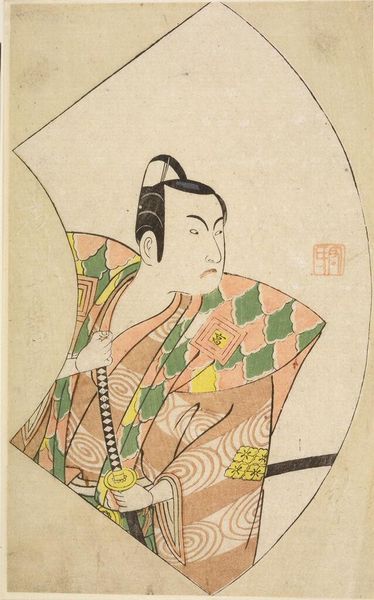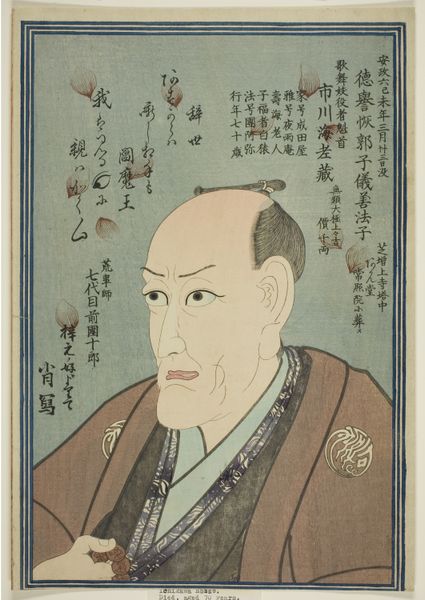
Copyright: Public domain
Editor: Here we have Yamamura Toyonari's 1920 woodblock print, "Kataoka Nizaemon XI as Kakiemon". There’s a striking sadness in the actor’s profile. It makes me wonder about the stories he carries. What resonates with you when you look at this, beyond its aesthetic appeal? Curator: Well, this piece isn't simply a portrait; it's deeply embedded in the cultural context of Kabuki theatre. Prints like these were vital to an actor’s brand. How do you think images like this one contributed to an actor's public persona? Editor: I imagine it was like a publicity shot, helping to build their celebrity! But what does it mean to portray him “as Kakiemon”? Curator: Kakiemon likely refers to a character that Kataoka Nizaemon XI played, intertwining the actor’s identity with that role. These actor prints, called yakusha-e, gained popularity in the Edo period because they advertised plays and promoted individual actors. Can you see how the details of costume and even pose might be used to convey particular ideas to an audience? Editor: Yes, the intricate pattern of his robe, the shaved head, even the slight downturn of his mouth all hint at something specific to this character, maybe something melancholic. Curator: Exactly! The image is working within a specific visual language of Kabuki and celebrity. Knowing this, does that influence how you understand his expression now? Editor: It makes me see it as less a spontaneous sadness, more like a crafted performance, a constructed image. The artist and actor worked together, knowing what the audience would expect from both of them. Curator: Precisely. The artist is reflecting back on social attitudes. Editor: It’s amazing how much historical and cultural weight a seemingly simple image can carry! Thanks, that perspective shifts my understanding quite a bit.
Comments
No comments
Be the first to comment and join the conversation on the ultimate creative platform.
